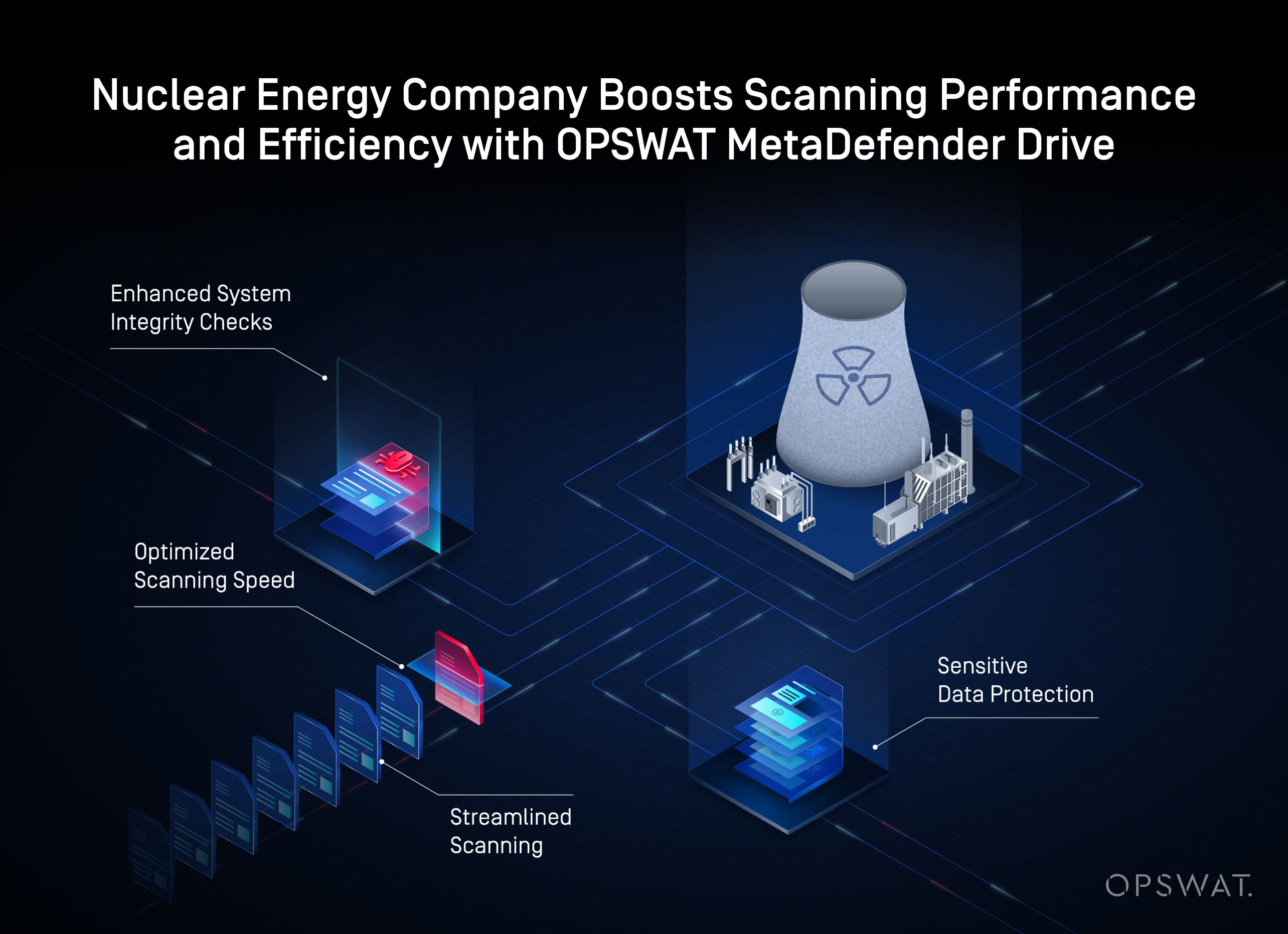Many nations strive to decrease their reliance on fossil fuels to generate electricity, turning to nuclear power as one of the favorable alternative solutions. Worldwide nuclear power generation is expected to increase from 372 gigawatts to 950 gigawatts by 2050, with 59 nuclear reactors currently under construction. This expected growth and the constantly evolving cyberthreats introduce new challenges to running efficient power plant operations and ensuring an uninterrupted electricity supply.
Critical infrastructure facilities, such as nuclear power plants, require trusted access for third-party devices to enter air-gapped zones. Granting access to such devices poses significant cybersecurity risks that require nuclear power plant operators to apply multi-layered security protocols that protect critical infrastructure and ensure compliance with strict regulatory standards.
Cybersecurity Risks and Operational Efficiency
The company’s strategy to secure third-party devices relied solely on one active scanning antivirus solution installed on third-party vendor laptops before entering the facility. After running a full system scan, the software would remain active during on-premises operations.
Relying on an active scanning solution to secure vendor laptops has three major flaws:
- Limited detection of new and unknown threats due to reliance on a single scanning engine.
- Low performance when scanning large files.
- Lack of compatibility with legacy devices.
In addition to these flaws, the active scanning solution caused vendor laptops to frequently freeze during operations. One such incident during an active scan caused a system downtime that lasted for nearly an hour, blocking access to a critical system component and raising reliability concerns. This led the company to seek an alternative solution to increase the efficiency of its cybersecurity protocols and reduce the risk of such incidents.
Seamless Regulatory Compliant Deployment with Minimal Formalities
In such a highly regulated industry, replacing equipment and deploying new solutions requires extensive planning, costly infrastructure upgrades, and strict security measures. MetaDefender Drive ships ready to use with the latest software version and up-to-date scanning engines, which helped our client overcome these challenges while ensuring compliance with regulatory guidelines.
Since many quality and assessment procedures were reliant on the data points provided by the previously used scanning solution, migration to MetaDefender Drive’s reporting system was required. The support for multiple report formats, in addition to the features of report management through Central Management and MetaDefender Drive Toolkit, reduced the difficulty of planning and executing this migration.
MetaDefender Drive deployment was one of the smoothest deployments I have witnessed. It took 30% less time than estimated to fully deploy across the designated locations.
Engineering Operations Manager
Significant Boost in Securing Third-Party Vendor Devices
MetaDefender Drive is designed to detect and remove threats before allowing them to be executed on critical systems. However, the capability to scan both recent and legacy devices was the most beneficial since many legacy devices weren't supported by the previously used live scanning solution.
With MetaDefender Drive’s comprehensive file-based vulnerability assessment, covering executable files and applications, the company noticed a significant increase in threat detection. In addition, Metascan™ Multiscanning technology, with malware detection rates reaching 88.9%, contributed to a noticeable increase in detected malware.
Exceeding Expectations and Future Expansion

Shortly after deploying MetaDefender Drive, the company saw major improvements in laptop scanning performance and operational efficiency.
Streamlined Scanning
The portability and custom scan options enabled the company's cybersecurity professionals to customize and streamline multiple bare-metal scanning routines depending on the device being scanned.
Optimized Scanning Speed
Scanning reports revealed that integrating MetaDefender Drive improved scanning performance, achieving a scanning rate of 111 files per second. This rate outpaced the traditional solution's rate of 2 files per second, saving the company valuable time.
Enhanced System Integrity Checks
MetaDefender Drive’s ability to detect boot sector infections introduced a new malware detection capability that wasn’t covered by the previous solution.
Sensitive Data Protection
Detecting sensitive data using Proactive DLP technology significantly contributed to reducing the risk of data leaks and strengthened overall security
Our organization oversees most of the national nuclear electricity production, so system downtimes carry serious consequences. We can comfortably say this risk has been mitigated by adopting MetaDefender Drive.
Chief Cybersecurity Officer
With a demonstrated record in securing laptops and seamless integration with internal security protocols, MetaDefender Drive was further adopted across multiple sites as a fundamental security solution. The company plans to continue broadening its implementation of MetaDefender Drive across all its critical facilities in the near future.
Drive™
To learn more about how OPSWAT can protect critical infrastructure and discover more about MetaDefender Drive’s capabilities, reach out to an OPSWAT expert today.





